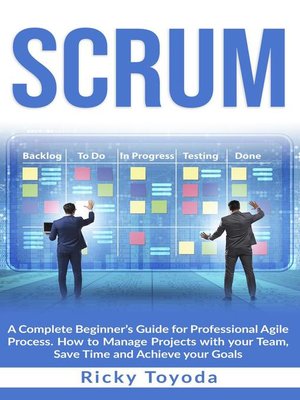
Sign up to save your library
With an OverDrive account, you can save your favorite libraries for at-a-glance information about availability. Find out more about OverDrive accounts.
Find this title in Libby, the library reading app by OverDrive.



Search for a digital library with this title
Title found at these libraries:
| Library Name | Distance |
|---|---|
| Loading... |
Do you want to learn how to manage projects with your team, save time, and achieve your goals? Then Scrum is what you're looking for.
Do you want to learn how to manage projects with your team, save time and achieve your goals? If so, then keep reading...
Scrum is possibly the very first thing that people think about when someone mentions Agile. It's no coincidence, and this is the most frequently used framework that teams use. It provides the highest possible value for products, allows developers to quickly and decisively adapt to changes, and keeps them productive. Mostly, it's a project management super tool, and that has led to many companies using some core Scrum tools outside of software development. Scrum is very different from the other Agile methodologies in that it has a very strict framework, with specific roles and explicit events. There are rules in place, and there are right and wrong ways of handling change events.
Product Owners love Scrum because they know exactly what to expect from their software developer team even when they're entirely new to development. Working with developers, as a Product Owner, can be a struggle, to say the least. Imagine working with a team that must create a product that you could not possibly begin to put together. Scrum uses a combination of face-to-face conversation, documentation, and breaking the project into tiny parts. With this framework, there is no room for issues with communication, or for overlooking some aspect of the project. It is at its core the truest to all twelve principles of all the Agile methodologies.
This book covers the following topics:
...And much more
Scrum does have its own set of values that coincide with the values of Agile. Scrum Values include courage, focus, commitment, respect, and openness. The Scrum values were put into effect with the goal that it was possible for any working professional to have proficiency in all of these aspects. The Product Owners and people behind the creation of the project will likely know that they want to use Scrum. That decision to use Scrum before there is technically a team in place allows them to seek out individuals that they know can deliver on the many values of Scrum and Agile. Everyone involved must agree to communicate openly, and that includes communicating mistakes. Ultimately, Scrum uses these values to deliver a lightweight and easy-to-understand framework.
Scrum is the whole of the methodology, although people often use the term to refer to meetings, the team, or even the software itself. Those are incorrect because Scrum is the whole thing. It's the values, the team, the work put in, and the communication necessary for the project.







